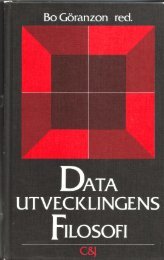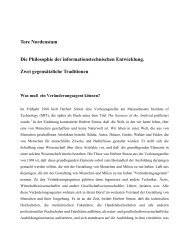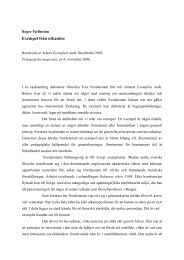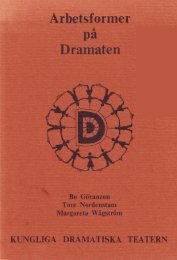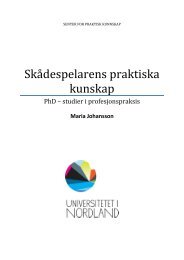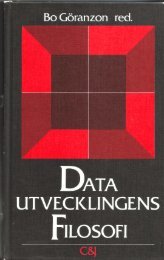Untitled
Untitled
Untitled
- No tags were found...
Create successful ePaper yourself
Turn your PDF publications into a flip-book with our unique Google optimized e-Paper software.
AURI and Minnesota Corn GrowersDistiller’s Dried Grain Flowability Study SummaryMethods to Improve Flowability and Pelleting of Distiller’s Dried Grainswith Solubles (DDGS)October 17, 2005Goal of Project:With the expansion of ethanol plants in Minnesota, the ethanol industry, Minnesota CornGrowers, Agricultural Utilization Research Institute (AURI), state colleges anduniversities receive multiple inquiries per year concerning the improvement offlowability characteristics and pelleting of distiller’s dried grains with solubles (DDGS).The focus of this study was to evaluate characteristics of corn DDGS that yieldedsatisfactory flowability. Testing was initiated to determine effects that physical size, oilcontent and moisture may have on the flowability properties associated with DDGSThere have been numerous articles published related to the problem of DDGSflowability. However, very few focus on solutions or opportunities to improve flowabilitythrough formulation, process changes or mechanical designs. Thousands of dollars havebeen lost in specific incidences where DDGS shipments were declined due to poorproduct flowability. Improvements to product flowability offers the potential forexpanded markets due improved product flow when shipped via truck, rail, or duringstorage. Evaluating pelleting procedures to produce a quality pellet with improveddurability can lead to new or expanded product potentials for marketing distillers driedgrains with solubles.Involved Organizations:Appreciation is given to the Minnesota Corn Growers and the Agricultural UtilizationResearch Institute for co-funding the DDGS flowability study.Information obtained benefits Minnesota ethanol plants involved in the sale anddistribution of DDGS. Test results also provide valuable information to producers,manufacturers, and entrepreneurs involved with every-day handling of DDGS in whichproduct flowability and pelleting are critical.TestingTesting of DDGS occurred in three areas: (1) analytical, (2) flow characteristics, and (3)pellet durability.Five samples of DDGS were sourced. These samples included two control samplesfrom two ethanol plants (Control #1 and Control #2) and three modified samples ofDDGS. The modified samples included a de-oiled DDGS sample (Mod #3 de-oiled),a reduced syrup DDGS sample (Mod #4 reduced syrup), and a pelleted DDGSsample (Mod #5 pellet).1
Reviews 591pirical semantics worked out by Arne Naess and his researchassociates ('the Oslo school'), but he goes beyond Naess in twoways. In the first place, he makes good use of contemporaryanalytical philosophy and legal doctrines of interpretation to supplementthe logical skeleton provided by Naess. In the second place,he illustrates all the main theoretical points with examples drawnfrom contemporary political science.The chapter on 'rules of systematization' presents some ways ofarranging complex discussions into principal and subordinatearguments. The source of inspiration is Naess's 'pro et contraanalysis', i.e. a systematization of the arguments adduced in adebate into pro-arguments and contra-arguments with supportingarguments of higher levels. It may sometimes be useful to arrangesuch argumentation surveys according to the groups which havepropounded them, writes Vedung, and illustrates his point withworks by Robert A. Levine and Olof Ruin. There is also a clarifyingdiscussion of the role of the analyst's theoretical apparatus inthe systematization of ideological writings, nicely illustrated withRobert Heeger's analysis of Gramsci.The main point of the chapter on relevance testing is the need fora clear distinction between questions of meaning and validity andquestions of function. Questions of meaning and validity cannot beanswered with reference to the functions of the messages, forVedung this is the fundamental rule of relevance. To attempt toanswer validity questions with reference to functions is to commit agenetical mistake. Vedung finds that e.g. Karl Mannheim'ssociology of knowledge and the emotive theory of meaning restsquarely on genetical mistakes. The chapters on logic (rules of consistencyand validity) and empirical testing are more elementary,but like the rest of the book very clear and instructive.The last chapter of the book brings us to more controversialground: what kind of meaning and validity, if any, do valuejudgements have? After surveying what recent analytic philosophyhas to say on the matter, Vedung concludes that 'metaethics givesno clear answer to the questions about the meaning of valuejudgements and how value judgements should be valididated'. Yethe does not endorse the value nihilistic rejection of evaluativevalidity. Political science need not restrict itself to being a theoryabout morals. It can also contribute to the theoretical work withinmorals. Vedung bases his argument on the distinction betweencategorical and instrumental value judgements. Instrumental value
592 Economic and Industrial Democracyjudgements are statements about the likely consequences of variousactions, according to Vedung, and therefore they are ordinary empiricalstatements which can be tested in the same way as other empiricalstatements. The instrumental value judgement that therestriction of the freedom of the press is a good way of preventingthe activities of the intelligence service being revealed to outsiderscan be rephrased as an empirical statement saying that curbing thefreedom of the press is likely to lead to a diminishment of the riskthat the intelligence activities are revealed to outsiders.From this Vedung draws the conclusion that empirical sciencecan contribute to the solution of problems of validity of valuejudgements. 'Good empirical theory helps us to assess the validityof the value judgements. This means that applied science, normativetheory or that which is called "policy-science" in the States,becomes a fully respectable enterprise.'Science, in casu political science, can also help to clarify someaspects of categorical value judgements: it can help to clarify theirmeaning and inform us about the relevant facts which arenecessary to know in order to be able to choose the best alternative.It can also clarify such issues as the physical possibility of realizinga certain alternative, the likelihood that different alternatives willlead to the desired goals, the likelihood of undesirable side-effects,the consistency of a programme containing several categorical valuejudgements.These observations should go a long way to dispel the prevalentnorm hypochondria. At the same time I fear that Vedung's treatmentof instrumental value judgements will contribute to themaintenance of false consciousness amongst social scientists as towhat they are really doing. In practice, it is not possible to drawsuch a neat distinction between categorical and instrumental valuejudgements as Vedung suggests. A scientist or any other expert whois given the task of undertaking a consequence analysis, say, ofsome alternatives will normally do more than a disengaged mappingof likely consequences. His selection of consequences to be consideredin more detail will be guided by his preconceptions, includinghis valuations and norms, and his preconceptions are likelyto influence also on his assessments of risks and probabilities. In sofar as the scientist can influence the selection of alternatives, and heoften can to a considerable extent, his evaluations and norms areagain bound to play a role which goes beyond the mere fact-





